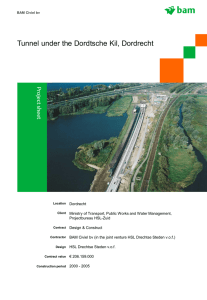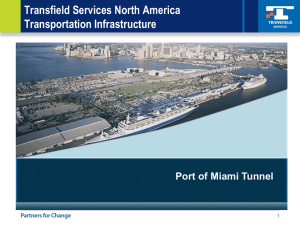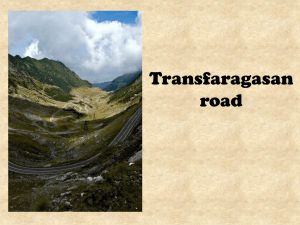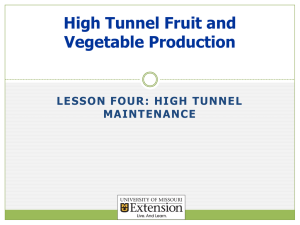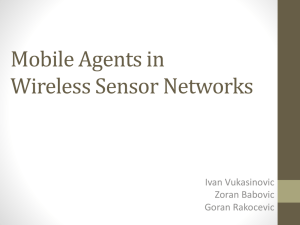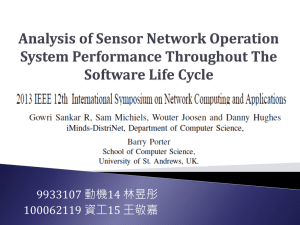Is There Light at the Ends of the Tunnel?
advertisement
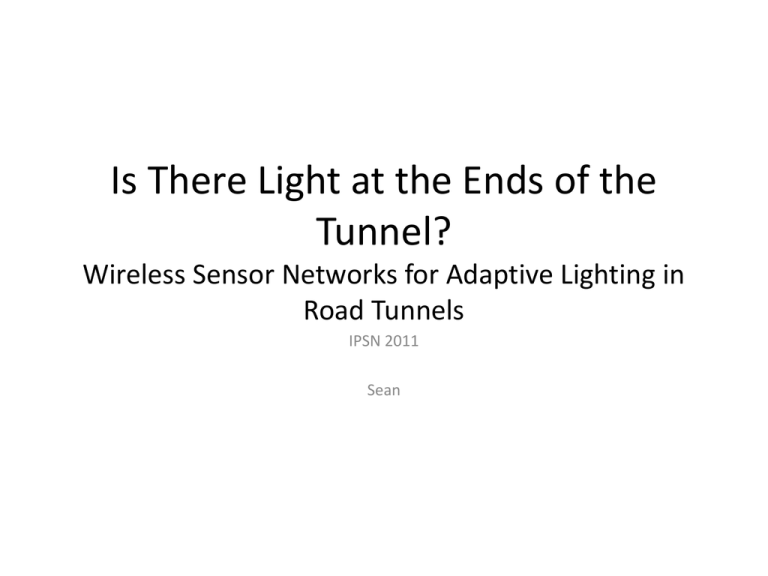
Is There Light at the Ends of the Tunnel? Wireless Sensor Networks for Adaptive Lighting in Road Tunnels IPSN 2011 Sean Outline • • • • • • • • Goal Challenge Contribution System Architecture Hardware & Software Testbed Evaluation Conclusion Goal • WSN-based Close-loop adaptive lighting in road tunnel – Improve tunnel safety – Reduce power consumption • State-of-the-art solutions – Pre-set lighting based on date and time – Relying only on external sensor • Testbed evaluation • Real deployment – Project TRITon – 630m, two-way, two-lane tunnel Challenge • Peculiarities of Tunnels – – – – – – harsh environment, relatively studied on WSN o. Interference with WSN radio Vehicular traffic dirt and dust accumulation o. Occlusion & noise to light sensor Periodic tunnel cleaning direct sunlight Limited deployment & debugging Light variation • Need filtering – Better connectivity • Robustness • Packet collision Variation caused by vehicle Challenge • Real-world constraints – – – – – Extended lifetime : at least 1-year by tunnel operators WSN cannot fail due to continuous operation Sensed data must arrive timely Quality of sensing Integration with conventional, industrial-strength equipment Contribution • Verify WSN-based solution to adaptive lighting is feasible • Understand what extent the mainstream WSN technology can achieve • Real testbed implement • Gaining practical insight into tunnel scenario – Real-world lesson asset System Architecture • 3 components – An external sensor Measure the veil luminance Determine the legislated curve – A grid of light sensor along the tunnel length Compute error between legislated curve and actual lighting – A control algorithm Drive above error to zero HPS in Testbed LED for project Hardware & Software • Collection tree – Use LQI as path cost – Periodically reconstructed every 3min • Light Sensing – Average 4 sensor value into S(i) – Average all S(i) into S(all) – if |S(all) – S(i)| differs from S(all) by 50%, discard it – Recompute S(all) Testbed • • • • 40 nodes, 260m-long, two-way, two-lane tunnel PLC relies only on first 15 node 7-month experiments More dense than TRITon – 44 nodes, 630m • Light sensor sample every 5s, PLC collects data every 30s Evaluation • • • • • • Light adaptive effect Loss rate Timely delivery Resilience to gateway failures Retransmission cost Expected lifetime Light adaptive effect • Artificial step response Still follow the reference trend • Node position relative to lamps bears great influence • Behavior of other node is closer to node 7 than node 4 Light adaptive effect • Real-world reference Bound by the dynamic range of light actuator Only 150 lx maximum Loss rate Time spent transmitting and waiting for receiver to wake up becomes significant Timely delivery > 60s: PLC will loss more than one sample in its cycle 30~60s: PLC may loss a sample in its cycle Resilience to gateway failures Retransmission cost Expected lifetime • Battery discharge profile – Temperature – Voltage – Discharge current • Underestimate – Use average discharge current of 100mA – LPL-like MAC only consume a few mA • 250ms LPL is better – Power consumed in channel check – Packet strobe time Trade-off Conclusion • Reach the goal of close-loop adaptive lighting • Provide real-world insights and experience by using WSN in road tunnel Any Problem?



